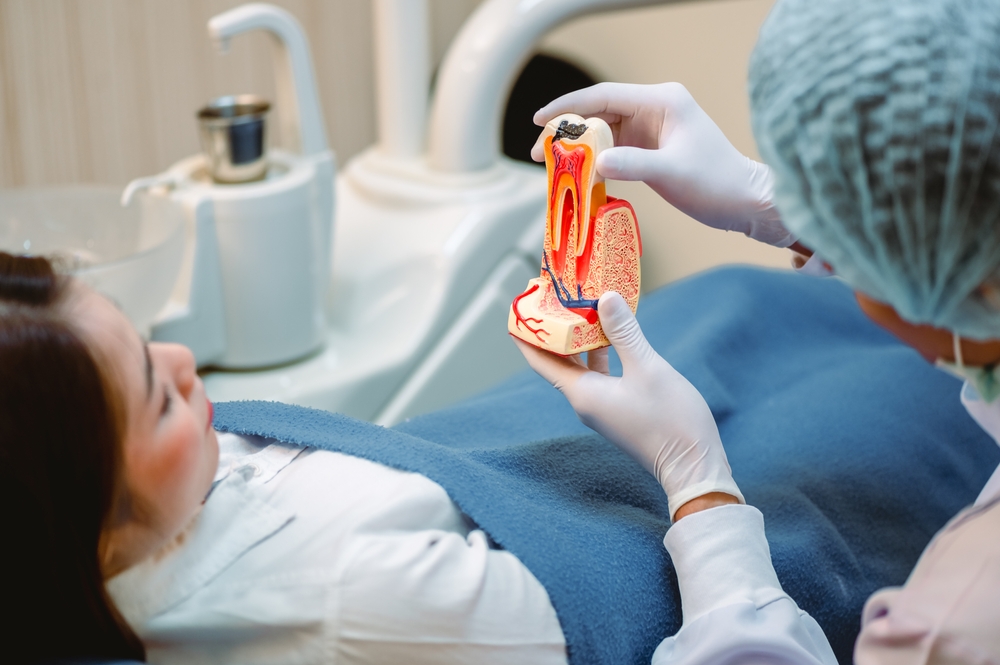Dental health is crucial for overall well-being, yet many people delay treatment due to fear or lack of understanding about dental procedures. One such procedure that often evokes anxiety is root canal treatment. Understanding what a root canal is, why it’s necessary, and what to expect can help demystify the process and alleviate concerns.
What Is Root Canal Treatment?
Root canal treatment, also known as endodontic therapy, is a dental procedure designed to treat infection at the center of a tooth (the pulp). The pulp contains nerves, blood vessels, and connective tissue. When the pulp becomes infected or inflamed due to deep decay, repeated dental procedures, cracks, or trauma to the tooth, it can cause severe pain and lead to abscesses if untreated.
During a root canal, the dentist removes the infected or inflamed pulp, cleans and disinfects the inside of the tooth, and then fills and seals it. This process helps save the tooth, prevent further infection, and alleviate pain.
When Is Root Canal Treatment Needed?
Several signs and symptoms indicate the need for a root canal treatment:
1. Persistent Pain: One of the most common indicators is persistent tooth pain. This pain can range from mild to severe and may worsen when chewing or applying pressure.
2. Sensitivity to Heat and Cold: A tooth that continues to feel sensitive to hot or cold temperatures, even after the source of the temperature is removed, may have damaged or infected pulp.
3. Swollen Gums: Swelling around the affected tooth can be a sign of infection. The gums may also be tender or have a small bump (abscess).
4. Tooth Discoloration: An infected tooth can become discolored due to the breakdown of internal tissues. This discoloration is often grayish-black.
5. Chipped or Cracked Tooth: Any damage to a tooth, such as chips or cracks, can expose the pulp to bacteria, leading to infection and the need for a root canal.
6. Deep Decay: Extensive decay that reaches the pulp of the tooth typically requires a root canal to remove the infected tissue and save the tooth.
The Root Canal Procedure
Understanding the steps involved in a root canal can help ease anxiety about the process. Here’s what typically happens during a root canal treatment:
1. Examination and X-rays: The dentist will first examine the tooth and take X-rays to determine the extent of the infection and plan the procedure.
2. Anesthesia: Local anesthesia is administered to numb the affected tooth and surrounding area, ensuring a painless procedure.
3. Access Opening: The dentist will create an opening in the crown of the tooth to access the pulp chamber and root canals.
4. Cleaning and Shaping: Special tools are used to remove the infected or damaged pulp. The inside of the tooth is then cleaned and shaped to prepare it for filling.
5. Filling and Sealing: The cleaned and shaped canals are filled with a biocompatible material, usually gutta-percha. The opening is then sealed with a temporary or permanent filling.
6. Restoration: After the root canal, the tooth may require a crown or other restoration to protect it and restore its function. This is especially important for back teeth, which endure more pressure from chewing.
Post-Treatment Care
After a root canal, it’s normal to experience some discomfort or mild pain for a few days. Over-the-counter pain relievers can help manage this. It’s also important to maintain good oral hygiene, including regular brushing and flossing, to prevent further decay or infection. Avoid chewing on hard foods with the treated tooth until it’s fully restored with a crown.
Benefits of Root Canal Treatment
Root canal treatment offers several benefits, including:
- Pain Relief: It effectively alleviates the pain caused by an infected or inflamed pulp.
- Saving the Tooth: It allows the natural tooth to be preserved, avoiding extraction.
- Preventing Spread of Infection: By removing the infected tissue, it prevents the spread of infection to other parts of the mouth.
- Restoring Function: A restored tooth can function like a natural tooth, allowing normal chewing and biting.
Root canal treatment is a common and highly effective procedure for treating infected or damaged tooth pulp. Understanding the process and its benefits can help patients feel more at ease and prepared for the procedure. If you experience any symptoms that may indicate the need for a root canal, consult your dentist promptly. Early treatment can save your tooth and alleviate pain, contributing to your overall dental health.
Choose The Experts At Wolter Advanced Dental Care For The Whole Family
At Wolter Advanced Dental Care, we provide high-quality, comprehensive dentistry using the latest technology and materials available to ensure the best treatment possible for our patients. Our staff is committed to patient care and comfort and is dedicated to creating an environment that is welcoming, family-friendly, and stress-free. If you are ready for cosmetic or restorative dental care in the Chambersburg, PA area, or if it’s time for your twice-a-year cleaning and exam, consider Wolter Advanced Dental Care. Call 717-496-9093 to schedule a consultation today.


